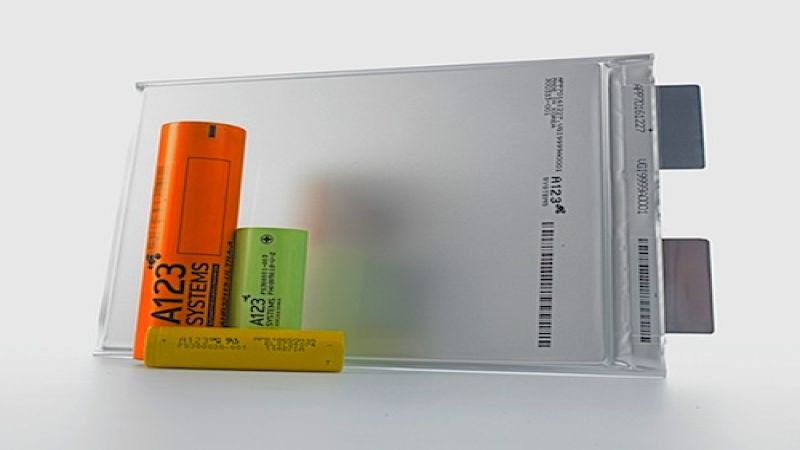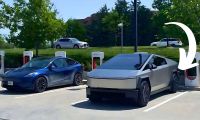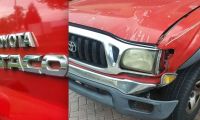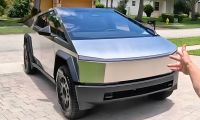The future of lithium-ion battery technology has never looked so bright. Breakthroughs happen at a neck break pace while industry experts predict only a few companies will be left in 5 years.
Tin Lithium. Grant Norton and his team at the Washington State University have found that using tin would triple the energy density of a lithium battery. Indeed, using tin for the anode, the energy density could be greatly enhanced. The benefits of using tin would mean faster recharge time as well as a greater life cycle. The best part of it is the technology could be manufactured within a year. What needs to be worked out is that under these circumstances, tin creates what is called “mustaches” creating short circuits. The team feels this can easily be solved, if not kept under control.
Tripling Battery Energy Capacity. Mindset Holding AG, which we have written about previously and its partner H Tech AG have announced some very impressive battery energy density numbers. With a 100% improvement derived form the work of Jörg Hempel, H Tech announced they have reached an energy density of 0,26kW/kg, besting the current 0,13kW/kg. Mindset Holding AG, which produces extremely efficient electric cars will use these batteries while H Tech has already patented them.
Battery Makers Consolidate. The other news is a French study from the Roland Berger group that found the battery maker landscape could be very different within 5 years. Currently 5 makers share 70% of the battery manufacturing capacity. This number could be greatly reduced to 3, if not 2 sharing 90% of the market.
AESC, LG Chem, Panasonic/Sanyo, A123 and SB LiMotiv are the 5 biggest players in the field. The results would be less diversity but better homogeneity. What this means in the longer run is battery technology that share the same processing and manufacturing, which means lower costs and more efficient production lines. What this also means is that lithium battery makers would concentrate more on pure electric cars instead of hybrids. It seems hybrids are headed toward using NiMH batteries. The study also pointed towards a substantial growth of up to 85% of light urban commuters using lithium technology. It also hinted at a over-production of a few million electric cars.
Last but not least, and this should come as no surprise to anyone, China should emerge as the leader in the electric drive market by 2020. This explains why carmakers are so eager to be well positioned in the Chinese market.
The battery market is red hot and with China shaping up to be the ultimate mass electric drive champion, we can bet lithium battery technology will keep improving.












Comments
There are some all-too-common
Permalink
There are some all-too-common errors in this story. The tin anode can NOT triple the energy density of the battery. It can only triple the energy density of the anode. But the anode is only one of the two electrodes in the battery, and in fact, the conventional carbon anode is already the smaller of the two electrodes. So the tin could really only increase the energy density by about 30%. To triple the energy density, they need to improve the other electrode, the cathode. Of course, that is being worked on too, and I expect that there will be batteries with triple the energy density of the current ones in a few years.
There's also an error in the data for the other company's battery. The energy densities are given in kW/kg. However, energy density should be kW hours/kg. Technically, this should be called specific density, but is often called energy density, which is fine. However, kW/kg would be power density, which is a completely different thing.
Getting facts wrong really hurts the credibility of the article.
I'm suppose you know what you
Permalink
In reply to There are some all-too-common by Dwane Anderson (not verified)
I'm suppose you know what you are talking about, however I think we need to be positive rather than negative about this exciting new frontier. Why rain on their parade?
Sorry, but battery technology
Permalink
In reply to I'm suppose you know what you by Ken Bridges (not verified)
Sorry, but battery technology and its implications for automobiles is not a religion (or at least, it shouldn't be), so facts and data are important and should be clear and correct. If you're after EVangelism, then you can preach and shout your zealousy all you'd like with whatever made up facts you want, but that doesn't help anyone.
I recently met with a guy who claimed his battery could get nearly triple current Li-ion densities. I went to his website to check his information and found.. it's not there, despite being prominently displayed on his public literature and card.
More smoke blowing into the EV discussion channel. Remember EESTor? Whatever happened to them and their magic supercapacitor? Meanwhile, Tesla keeps putting laptop batteries into their cars and selling the hell out of the idea to other car companies in the process. Tried-and-true and proven always works. Smoke and mirrors eventually gets outed.
Aaron, take a deep breath...
Permalink
In reply to Sorry, but battery technology by Aaron Turpen
Aaron, take a deep breath... The facts aren't made up and came out of the research. Nothing more, nothing less. As you've noticed, we are humans and not shielded from typos and mistakes. I certainly don't expect your article to be 100% reliable either. EEStor was always clouded in skepticism. You're just showing the worse, not making a good case. IBM's Lithium Air does beat anything so far, no smoke and no mirror.
At least, I'm working for a more intelligent drivetrain that keeps our national energy security at home, instead of wasting our hard earned dollars with countries at war with us. It's better than nothing and certainly better than the rehashed crap in the news media circle. At least the current EV technology is new and exciting, something I can't say about most current gasoline cars :) Chill out when you read about EVs.
My response was to Ken, who
Permalink
In reply to Aaron, take a deep breath... by Nicolas Zart
My response was to Ken, who seems to have the idea that we should only spin positive with battery electric cars and technology and never discuss anything questionable or negative about them. That fits the definition of a religion.
I'm trying to put a little brevity into the EVangelism that seems to have taken over TN and much of the Internet in general. Electric cars aren't the end-all, be-all, most awesome choice out there. They're ONE option that MAY pan out EVENTUALLY as a great choice for replacing petroleum fuels. Right now, at best, they're a good choice for a SMALL number of people.
Aaron, I completely agree
Permalink
In reply to My response was to Ken, who by Aaron Turpen
Aaron, I completely agree with you. And last I checked, TN is not just about gasoline cars. Whoever hails EVs as an end-all, be-all usually don't have a lot of interesting things to say, like their gasoline counterparts. It is for now a choice for some people and will be a growing choice for more people as time goes by. If the development continue as they have done so in the past, will see more and more choice of hybrids, plugin-hybrids and pure electrics everywhere.
Hi Dwane, you caught it, it
Permalink
In reply to There are some all-too-common by Dwane Anderson (not verified)
Hi Dwane, you caught it, it should have been measured in kW hours/kg and yes, it for the Anode, not the other two crucial parts. The research does mention triple energy efficiency, which seems to be as correct as can be. Thank you, Nicolas
This is great news. I think
Permalink
This is great news. I think we will have several electric cars with 500 miles plus between charges in less than five years!!! Keep charging ahead, and good luck!
Expecting them that soon is
Permalink
In reply to This is great news. I think by Ken Bridges (not verified)
Expecting them that soon is pure dreamland.
First, without thorough testing in both lab and real world, no manufacturer is going to put their name on the line with a new technology. Second, even if someone does do that, they won't be able to realistically offer any kind of warranty on those batteries. Third, if the technology is substantially different from current chemistries, a host of regulatory tests will be required.
Not necessarily true.
Permalink
In reply to Expecting them that soon is by Aaron Turpen
Not necessarily true. Southern California Edison tested 2008 Johnson-Craft lithium-ion batteries then in lab showing over 200,000 without noticeable degradation. Second, the gasoline engine wasn't born the star it is today and went through decades of lame performance increments. Battery technology improvements have done better in one decade than ICE in the past decades. This is something we can be happy about at least.
Lastly, everyone needs to become rational when talking about range. Range anxiety is a nasty by-product of convenience. The fact is we don't drive 500 miles straight. No bladder can take this unless you have a problem and need to wear diapers. We can recharge in 20 minutes. Lastly EVs are very, very different from gas cars and shouldn't be compared to them. They are topped off whenever you find a charging station, which is something I found to be very convenient. Come to think of it, driving on an empty gas tank is not a smart idea either :)
Straw man alert! Nicolas,
Permalink
In reply to Not necessarily true. by Nicolas Zart
Straw man alert!
Nicolas, all I said was that the technology will not be widely adopted until it's been proven. Period. I didn't say anything about range anxiety, gasoline performance history, battery improvements, etc.
Simple fact: automotive companies do not widely adopt new technologies in drive train or chassis until those techs have been well-proven in the field. Sure, they might throw out a model or two with those changes in them, but they won't change their entire lineup for years.
As for Johnson and SCE.. that was a test. How many vehicles have that li-ion tech in them now? Any at all? A couple? A handful of prototypes? It's been almost five years...
It seems every time you read
Permalink
In reply to Straw man alert! Nicolas, by Aaron Turpen
It seems every time you read something about EVs you equate it to EVanglism, which is not the case here at least. The technology has been proven and is currently being proven. Batteries last longer than the mandated Californian law of 10 years. Even if lab tests can be a little optimistic, SCE stands nothing by inflating the numbers. In fact, they need real hard core numbers to better predict demand. If all technologies weren't adopted until proven, then we might be starting to make chimney holes in our caves by now. Thankfully, we have early adopters to give us precise, real life scenario and move the rest of the sleepy mass along.
Almost all EVs have lithium-ion in them now. There are a few conversions also out there running up the miles. Not sure what you meant there.
No one is expecting car companies to change their entire line for a new technology. That would be ludicrous and a moot point.
As for the straw man alter, we only react to what bothers us inside :)
Nicolas, from this:
Permalink
In reply to It seems every time you read by Nicolas Zart
Nicolas, from this: "Expecting them that soon is pure dreamland.
First, without thorough testing in both lab and real world, no manufacturer is going to put their name on the line with a new technology. Second, even if someone does do that, they won't be able to realistically offer any kind of warranty on those batteries. Third, if the technology is substantially different from current chemistries, a host of regulatory tests will be required."
You somehow pulled SCE and a lot of stuff about range anxiety out of your hat.
I was specifically responding to Ken with his response to your article and the technology it talks about. Nowhere did I say anything about li-ion, about current battery warranties (neither the Volt nor the Leaf have 10 year warranties, btw), etc. I talked specifically about the technology given in your article as a response to someone else's comments about the technology in your article.
Nothing more. Yet you've come up wit hall of these straw man, extraneous arguments that are arguing nothing I've said.
Ken was stating if the
Permalink
In reply to Nicolas, from this: by Aaron Turpen
Ken was stating if the batteries can be manufactured in a year, that would mean cars out within 3 to 5 years, correct? That's not a stretch. Ford, GM, Nissan, Tesla have more or less bet on these chemistries, it seems. California is forcing carmakers to stand by their batteries life for ten years, which means it becomes the de facto for the rest of the country, am I wrong? This technology is not very different from current chemistry. So I don't see how it would ill-effect tests. I know how range anxiety is working up people, so we can leave it alone.
Simple cost-benefit. How
Permalink
In reply to Ken was stating if the by Nicolas Zart
Simple cost-benefit. How much more will this tech cost (for both licensing of patents and for production) and what will the benefit be for those costs? IF the batteries can be made in the next year (your words, not Ken's, actually), then they COULD have a possibility of showing up in a production car in 5 years, but it's slim. Again, manufacturers will want all of the data before they release it. It's too easy to put out a car that has all the latest bells and whistles and fancy lights, but then fails miserably in the real world and negatively brands the company and model line forever.
California's "forcing" of manufacturers to put 10 year stamps on their batteries has so far not resulted in any production cars with 10 year batteries. Both Nissan and GM said it would be a stretch and they aren't willing to take it. I understand that Ford will and we may see that from Honda, but so far, we haven't seen it in production in quantity. If we do, in my mind, all it does is set a production minimum and many will not go beyond it. Legislation like this often has unforseen consequences and if 10 years becomes the standard, then what happens to research to make it 20? 25? Will automakers bother?
After all, we have the technology to make gasoline engines last over 300,000 miles, but nobody uses it because it adds cost and would mean fewer sales over time.
Actually, Ken's words were:
Permalink
In reply to Simple cost-benefit. How by Aaron Turpen
Actually, Ken's words were: "I think we will have several electric cars with 500 miles plus between charges in less than five years!!! " So taken from the article the battery could be made within a year, his statement was that cars with tin anode technology could be within 3 to 5 years. That's not a stretch.
Yes, state governments dictating batteries last 10 years can make a few carmakers shy away from producing EVs but the gist behind it is that battery packs last for a few hundred thousand miles, more so than the eventual 300,000 we can get from a good Subaru or other more expensive cars. Best part is that that same pack, if you squirm at the idea of loosing a tiny percentage of storage after 6 years, you can replace it for a cheaper one and use it for home storage. Lithium price has steadily come down unlike petroleum price. I know it's not the same, bare with me.
As far as cost benefits, tin is actually cheaper to manufacture into lithium-ion than the graphite we use. If some manufacturers need convincing from a newer technology that helps people save money in the long run they will fall to the way side.
In the end, it makes the case for furthering the performance of lithium batteries. Those who can make a business case out of it will win. Those who can't will become irrelevant.
Gas cars do last 300,000
Permalink
In reply to Simple cost-benefit. How by Aaron Turpen
Gas cars do last 300,000 miles and more if you take care of it. They are pretty tough. Just use good oil and take it easy until it's warmed up.
Even cheapo Honda Civics last
Permalink
In reply to Gas cars do last 300,000 by danwat1234 (not verified)
Even cheapo Honda Civics last longer than 300,000 miles. A 1990s Accord lasted 1 million miles (Million mile Joe).
98% of all Subarus are stil
Permalink
In reply to Even cheapo Honda Civics last by danwat1234 (not verified)
98% of all Subarus are stil on the road today and 250,000 without much work is conceivable. The gist is with an electric motor there are less moving part, almost no maintenance and certainly less than with a gas car. I thin that was the point we were trying to make.
Nicolas, I googled
Permalink
In reply to Not necessarily true. by Nicolas Zart
Nicolas, I googled Johnson-Craft lithium-ion batteries and found nothing except your comments about it on a few other blogs. Do you have a link to an article about this? And you keep saying that it shows 200,000... what? Charge cycles?
It was done at the Southern
Permalink
In reply to Nicolas, I googled by Dwane Anderson (not verified)
It was done at the Southern California Edison electric car fleet center in Pomona. I visited it and they were telling me they had done that. It was printed shortly after. It was a few years ago. I made sure to ask them over and over and they confirmed it. It also surprised me a lot. Anyway, the Johnson-Craft deal went south but it was a wake up call back then.
Sorry, if I remember well,
Permalink
In reply to Nicolas, I googled by Dwane Anderson (not verified)
Sorry, if I remember well, SCE said 200,000 miles without noticeable degradation. And yes, it was a lab test.
Yes, Ken, better good news
Permalink
In reply to This is great news. I think by Ken Bridges (not verified)
Yes, Ken, better good news than no news but there are still a lot of emotional people reacting to these news as our good friend Aaron below reminds us of :)
Whatever, Nicolas. Read my
Permalink
In reply to Yes, Ken, better good news by Nicolas Zart
Whatever, Nicolas. Read my comments without your own rosy glasses and emotional responses. All I did was add a little realism to Ken's zealotry. In fact, I never commented on your article itself at all - just Ken's view of it.
But hey, like I said, don't let reality get in the way of your religious views.
The only "emotional" comments
Permalink
In reply to Whatever, Nicolas. Read my by Aaron Turpen
The only "emotional" comments mentioning religion and rosy glasses are not ours. Remember, we only react to what bothers us. I try to be as middle road as possible and like the technological innovations Mazda and Mitsubishi have done also. I just like the fact we can use our home made USA energy to drive us 80% of the time instead of spending on countries that just don't care about us. That's national security there, something we should push. Seriously, it's all fun. Take it as such. I know I am.